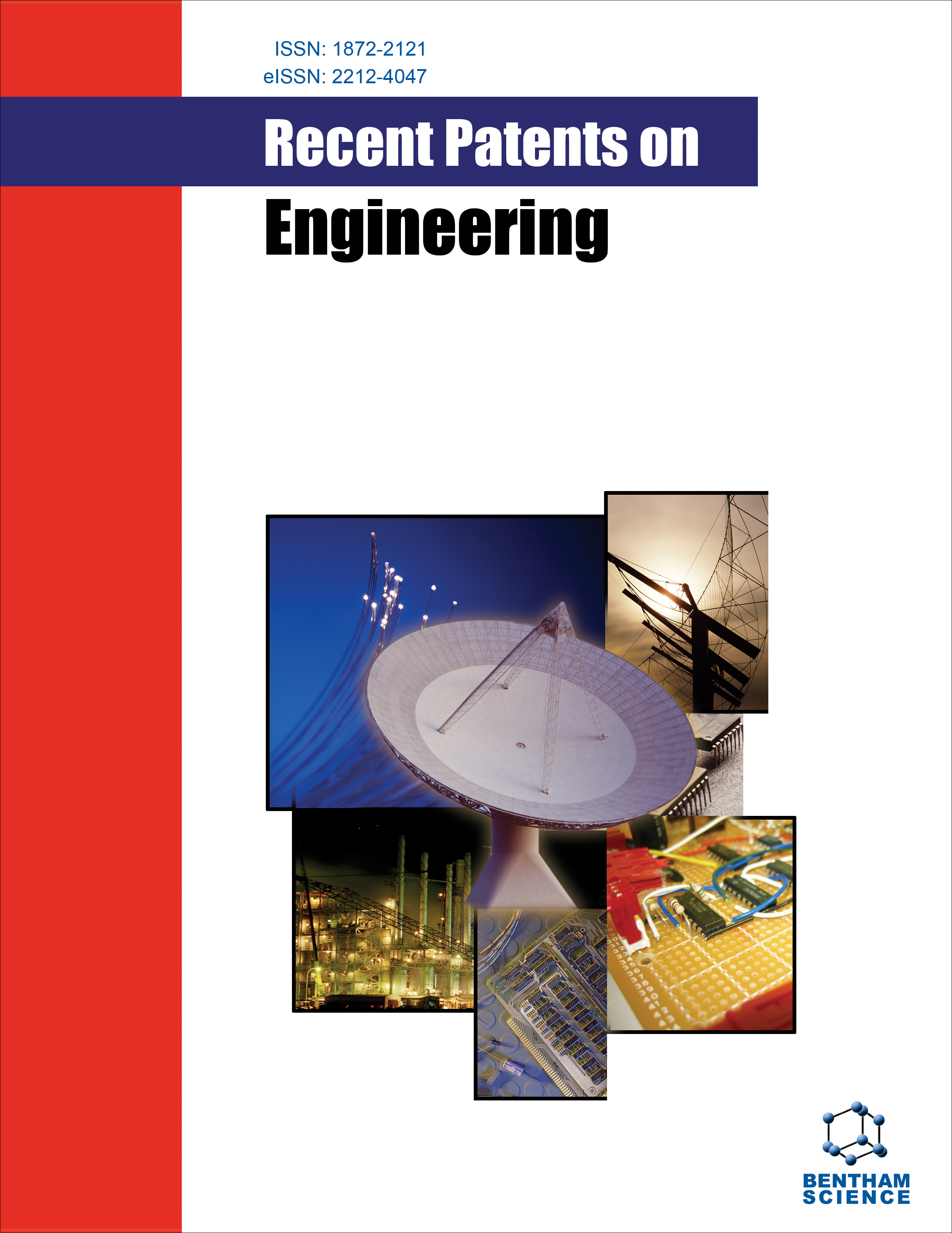- Home
- A-Z Publications
- Recent Patents on Engineering
- Previous Issues
- Volume 16, Issue 4, 2022
Recent Patents on Engineering - Volume 16, Issue 4, 2022
Volume 16, Issue 4, 2022
-
-
Recent Patents on Concrete Pavers of Coalmines
More LessAuthors: Zhan Cao, Daolong Yang, Xiaolei Ma, Yanxiang Wang, Songquan Wang and Tianchi ChenBackground: Concrete pavers are self-propelled units used in concrete pavement construction that have of paving, vibrating, and leveling functions. The existing concrete pavers have a large size, making it difficult for them to enter underground roadways, and it is difficult to adjust the paving equipment in real time when the width of the underground roadway is deformed. Objective: To realize intelligent concrete paving in coal Read More
-
-
-
Current Status and Future Perspectives of the Active Knee Joint Rehabilitation Device
More LessAuthors: Jingang Jiang, Ziwen Gao, Shichang Song, Xiaoyang Yu and Yang ZengBackground: Today, living standards and medical technology are improving, and the aging global population is increasing. However, more and more older adults are suffering from knee diseases. This will seriously affect patients’ daily life and their mental state. In many studies, repetitive physical exercises and motor activities in real-world environments have been shown to help improve knee muscle strength and restore damaged Read More
-
-
-
Active Capsule Endoscope Robot: Current Status and Future Perspectives
More LessAuthors: Jingang Jiang, Yang Sun, Shichang Song, Xiaoyang Yu and Dianhao WuBackground: China is a big country with a vast territory, in which gastropathy has become a common high-incidence disease in daily life. Gastroscopy is an important means of diagnosis of gastropathy, but the use of a gastroscope causes a lot of pain to patients. A cable-free, non-invasive and painless diagnosis and treatment tool, an active capsule endoscope robot, can solve this problem very well. Capsule robot Read More
-
-
-
Review of Subdivision Schemes and their Applications
More LessAuthors: Yan Liu, Huahao Shou and Kangsong JiBackground: Methods of subdivision surfaces modeling and related technology research have become a hot spot in the field of Computer-Aided Design (CAD) and Computer Graphics (CG). In the early stage, research on subdivision curves and surfaces mainly focused on the relationship between the points, thereby failing to satisfy the requirements of all geometric modeling. Considering many geometric constraints is ne Read More
-
-
-
Recent Patents on Third Generation Bearing Testing Machine
More LessAuthors: Yanling Zhao and Huanqing ZhangBackground: Bearing testing machine is the key equipment for bearing design, theoretical research and improvement, and it plays an important role in the performance of bearing life, fatigue, vibration and working temperature. With the requirements of aerospace, military equipment, automobile manufacturing and other industrial fields of the bearing are becoming higher and higher. There is an urgent need for high-pr Read More
-
-
-
Recent Patents on the Structure of Medical Endoscope
More LessAuthors: Yu-Dong Bao, Kai Li, Dong-Bo Qi, Wei Wen and He-Jun LiuBackground: The medical endoscope is a major functional component of medical equipment that has become the focus of study around the world. Objective: By comparing and discussing the patents of the medical endoscope, some valuable conclusions have been drawn to predict the future research and development of the medical endoscope. Methods: By analyzing the patent features of the medical endoscope in the mech Read More
-
-
-
Recent Patents for Collection Device of Fruit Harvesting Machine
More LessAuthors: Yudong Bao, Naifeng Yuan, Yanling Zhao and Linkai WuBackground: Fruit harvesting operation is an important part of the whole process of fruit production. As a key component of the harvesting machine, the performance of the collection device directly affects the harvesting efficiency and the quality of the collected fruits. Obtaining betterperforming collection devices and more efficient collection methods is the direction of research development in this field. Objectiv Read More
-
-
-
Convolutional Neural Network Based Intelligent Advertisement Search Framework for Online English Newspapers
More LessAuthors: Pooja Jain, Kavita Taneja and Harmunish TanejaBackground: Instant access to desired information is the key element for building an intelligent environment creating value for people and steering towards society 5.0. Online newspapers are one such example which provide instant access to information anywhere and anytime on our mobiles, tablets, laptops, desktops, etc. But when it comes to searching for a specific advertisement in newspapers, online newspapers do not pr Read More
-
Volumes & issues
-
Volume 19 (2025)
-
Volume 18 (2024)
-
Volume 17 (2023)
-
Volume 16 (2022)
-
Volume 15 (2021)
-
Volume 14 (2020)
-
Volume 13 (2019)
-
Volume 12 (2018)
-
Volume 11 (2017)
-
Volume 10 (2016)
-
Volume 9 (2015)
-
Volume 8 (2014)
-
Volume 7 (2013)
-
Volume 6 (2012)
-
Volume 5 (2011)
-
Volume 4 (2010)
-
Volume 3 (2009)
-
Volume 2 (2008)
-
Volume 1 (2007)
Most Read This Month
Article
content/journals/eng
Journal
10
5
false
en


